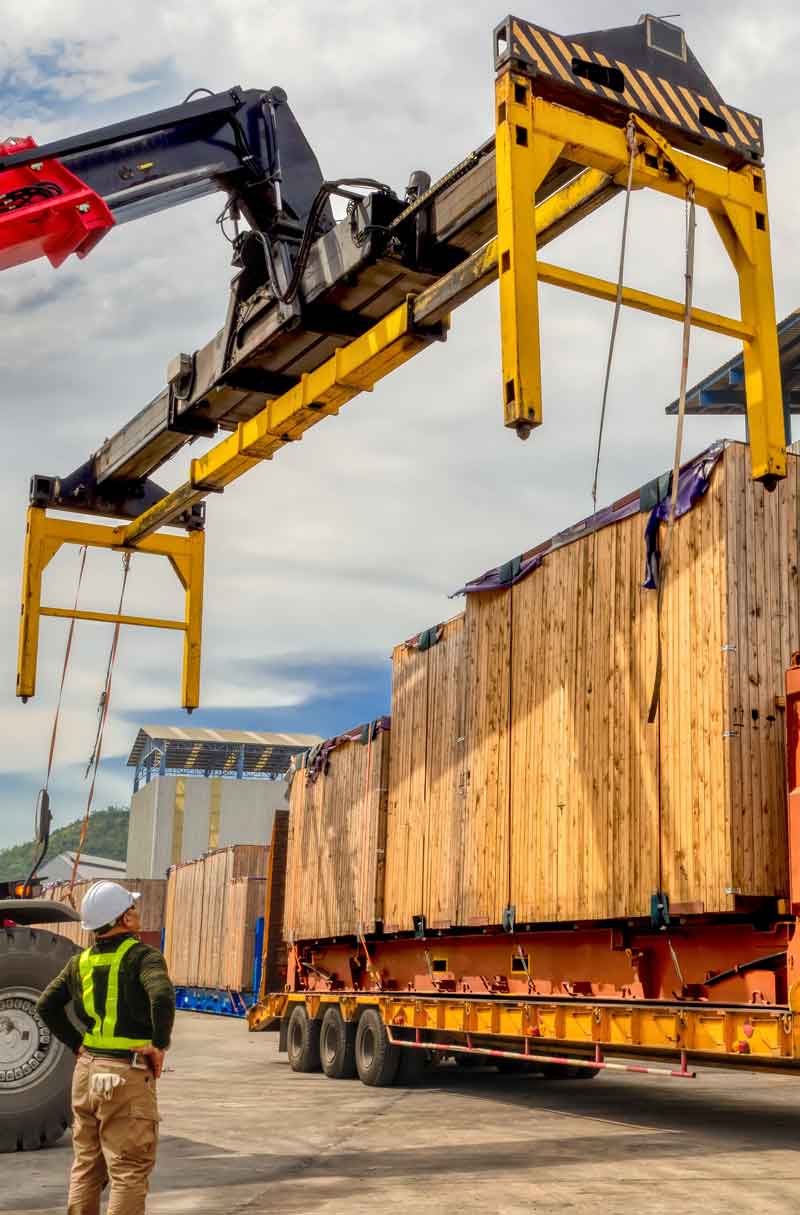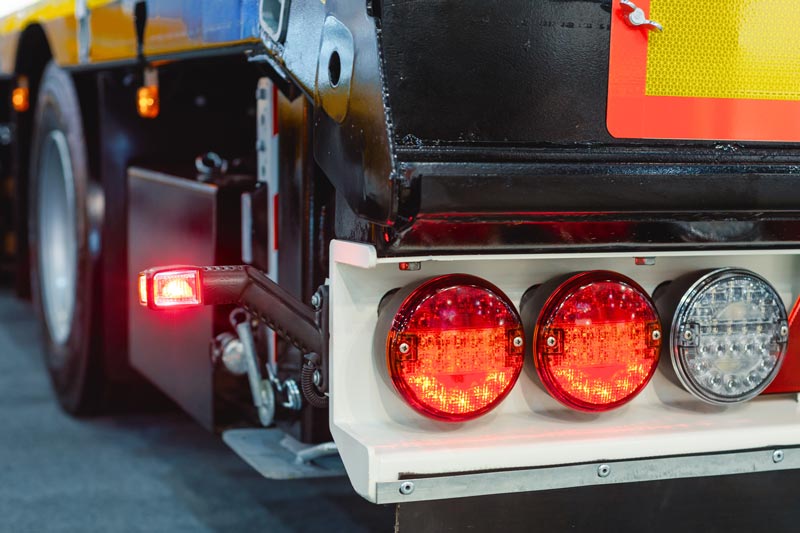Cargo securement isn’t just about tying down the load for transportation; it’s about protecting the cargo, the operator, and all the other drivers out on the road from risks and hazards. One loose strap could cause irreversible damage to all those around you, including yourself. One unsecured item on the back of the flatbed could mean life-changing consequences.
You need to make sure that you load is secured throughout the entire trip. That means taking several stops to check and ensure that the securement method is holding up and the load remains in place. A secured load means that the cargo cannot move, shift from the truck’s vibrations, roll around, tip over, or fall off of the vehicle. Everything, from the largest pallet to the smallest tool, needs to be firmly and completely immobilised on the back of the flatbed trailer.
This post contains a list of some of the most important things to keep in mind about cargo securement. For example, you need to make sure that all of your equipment, from the smallest bolt to the most heavy-duty winch, is in full working condition. Additionally, you need to make frequent stops in your journey to double check the securement of the load on the back of your flatbed trailer. Many steps and precautions need to be taken if you want to minimise the risk of losing cargo or causing irreversible damage and injury to others.
There is a myriad of useful and informative sources of cargo securement guidelines and safety that you can review whenever you need to check to make sure that you are following the proper protocols. Be sure to keep local, federal, and government regulations in mind when preparing your cargo for transit.
Always Be Aware of the Working Load Limit
The working load limit is the maximum allowed weight that may be applied to a cargo securement component under normal conditions. The WLL is one-third of the breaking strength rating, which refers to the point at which a section of a securement component will fail. A proper securement component, whether it’s a tie-down strap, end fitting, tensioning device, hook, chain, buckle, etc., will have the WLL information either on the actual component or available from the manufacturer.
Surpassing the WLL is extremely dangerous. For example, you should never use a winch strap with a WLL of 2,000kg to secure any load that weighs more than that. The strap will not be able to handle that amount of weight and could easily and most likely fail in the middle of transport, risking both the cargo and the other drivers out on the road. A good rule of thumb is that the cargo securement system is only as good as its weakest link. You must always keep the load capacity of every component in the securement system in mind. If you are working with a heavier load, then you’re going to need stronger equipment.
Replace Damaged Components
Checking over the cargo and the equipment before even starting the securement process is always a good idea. You need to check the load platform, bodywork, and all pieces of equipment to make sure that they are all serviceable. If you notice any damage, don’t push your luck. Immediately replace any weak components.
When it comes to webbing tie-downs, there are several things you need to watch out for that warn you about the degraded condition of the strap. Knots are a big sign as well as frayed edges and splices to the webbing along with cuts, holes, and burns. Severe abrasion that accumulates over time, which is unavoidable in such as a heavy-duty industry, is also a clear sign that it’s time to replace the strap.
For chains, which are needed for the tougher, heavy-duty tie-down jobs, you need to make sure that they are in the best condition. Chains that are bent, twisted, cracked, stretched, and defected should be scrapped immediately. Other signs of wear include severe corrosion, broken or non-functional latches, makeshift links or fasteners, and hook spread or twist. You also need to make sure that the chain is the proper grade designed for securement before using it.
Bent hooks, damaged tensioning devices, and rusted screws and bolts are also clear warning signs that your equipment is not up for the job. If you don’t want to spend money on a whole new tie-down assembly, you always have the option of buying the individual components to replace the worn-down parts. This also allows you to try new types of end fittings and buckles. Keeping your equipment clean and well-maintained can also go a long way in prolonging their service life and making sure that you are operating with the best kind of equipment you need.
Decide Which Securement Method Works Best
In the cargo control industry, you need to transport a lot of different types of loads. Some are small, some are huge, some are delicate, and some are heavy-duty. You need to be flexible in your cargo securement methods if you want to achieve greater safety and security. There are a couple of different methods that are most commonly used as well as a very, very wide and varied range of components, such as tensioning devices, end fittings, and other hardware.

The tougher the load, the tougher the tie-down method. When transporting some of the more heavy-duty cargo such as bricks, concrete, and lumber, you’ll want to switch to using heavy-duty chains to contain the load. Chains are built tough enough to handle the more abrasive cargo without risking their holding strength. When combined with strong end fittings and chain binders, you’ll be able to create a reliable grip on the cargo.
Most other types of cargo can be handled easily with strong webbing tie-downs, such as ratchet straps or winch straps. These tie-downs are designed to hold down the cargo with a very tight grip that prevents the loads from shifting around. With your hands on some good, quality, tightly weaved webbing, you’ll be able to take on many jobs that require a strong grip and a solid hold.
For the kind of a jobs that don’t require a lot of strength or holding power, you can use smaller tie-down straps that are equipped with cam buckles or overcentre buckles. These types of tensioning devices are designed to handle the light- to medium-duty jobs easily. They offer a more delicate touch that is essential when handling fragile materials such as glass.
Whichever method you choose to secure your load, you need to make sure that is capable of handling the job. Remember to always check the working load limit of each component of the securement method, making sure that it does not go over the weight of the entire load. Also, remember to check the quality of each component and to replace any piece of equipment that is too worn down or too old to function.
Make Frequent Stops to Check on the Load
It may seem annoying, but it is essential to check on your load frequently during transit. You need to always make sure that everything is tightened down and held firmly in place. Check the equipment, check the securement system, and check the load to verify that everything is the same as when you started the trip before continuing.
Your first stop to check on the load should be within 50 miles from where you started, or as soon as possible if you need to travel beyond 50 miles. Then you should check after the vehicle has been driven for 3 hours or 150 miles, whichever occurs first.

There are also other conditions that call for extra checking. For instance, while traveling, you may encounter a particularly bumpy road or construction that increase the vibration of the trailer more than usual. You need to verify that the load is holding up back there before continuing. Should you suddenly need to brake, though the cargo should be secured with a system that can withstand that kind of decelerated force, you should still check on the load. Particularly bad weather conditions are also a good reason to stop and check. Finally, when there is a change of duty status of the driver, the securement equipment should be checked again before moving on.


